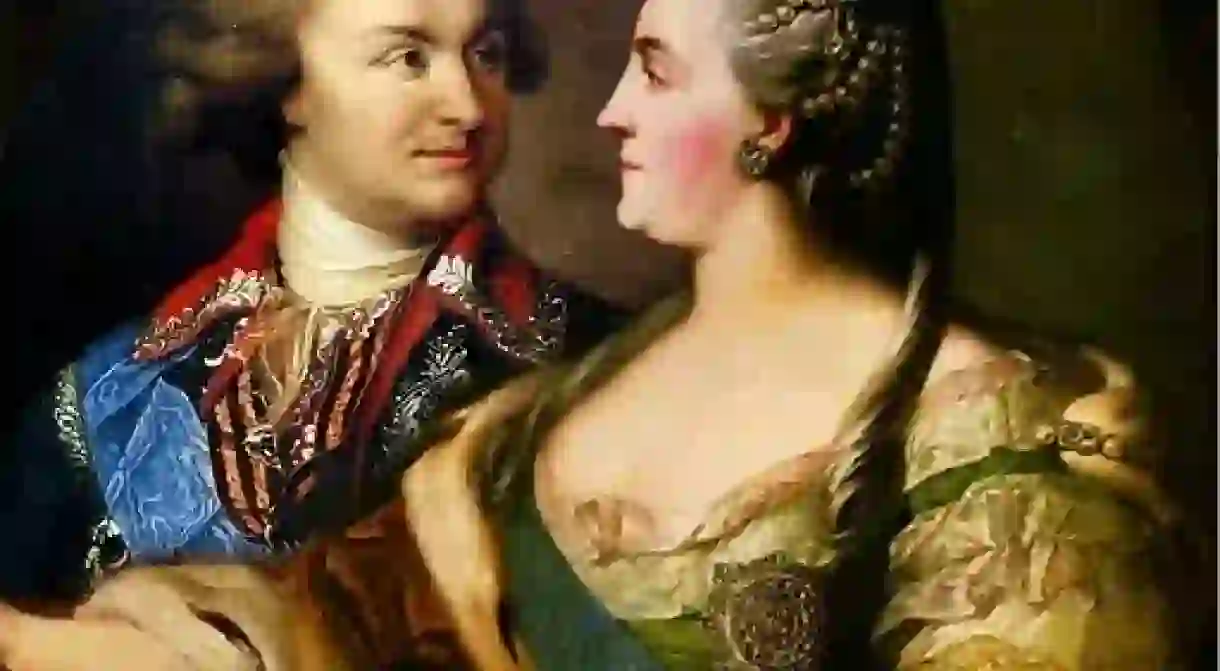The Good, the Great and the Terrible Tsars and Tsaritsas of Imperial Russia

A litany of rulers oversaw Russia‘s long and tumultuous history, and many earned titles according to how they served their people when in power. Some of these rulers were foreboding autocrats who led the nation into dark times of war and famine. Others tsars and tsaritsas pushed Russia forward, developing cultural institutions and social practices. Just so you don’t mix up the good with the terrible, here are the key former heads of state with sway.
Ivan the Terrible (1547–1584)
The Empire’s first legitimate tsar, Ivan the Terrible (or formidable or awe inspiring, depending on translation nuances), expanded Russian territory and power with considerable force. Under his orders, the city of Kazan was razed during the Siege of Kazan in 1552, and it and the region – now known as Tatarstan – fell under his rule. In doing so, he dismantled the Golden Horde, the largest Mongol-Turkic khanate in history. He also quashed powerful Russian aristocracy, establishing autocratic rule, a practice that would manifest in Russian governance through the epochs.

Peter the Great (1682–1725)
Peter the Great was crowned Tsar of Russia at the young age of 10, with his mother acting as regent. Upon her death, he came into autonomous power as a young man and was responsible for westernising Russia as he strove to modernise his nation. He restructured military forces and changed their uniforms to a more European style, and embarked on a European tour. During this trip he observed educational, industrial and bureaucratic practices, which he then implemented upon his return to Russia. He also managed to fit in a smashing victory over the Swedish army and established a national navy force. Partly in tribute to this, a large statue sits on top of the Moscow River in his honour.

Elizabeth of Russia (1741–1762)
Daughter of Peter the Great and his second wife (his former maid), Elizabeth of Russia came into power in a bloodless coup, after years of living in obscurity thanks to her mixed bloodlines. While celebrated for not executing a single person during her reign, she still led Russia through two wars. Under her rule, cultural institutions prospered. The university of Moscow was established, as was the Imperial Academy of Arts in St. Petersburg. Elizabeth of Russia also established an army of cats at the Winter Palace, now the Hermitage Museum. Initially brought in to defend the residence from rodents, the Hermitage Cats have now become a long-loved tradition that continues today.

Catherine the Great (1762–1796)
Under Catherine the Great’s long rule, Russia expanded its borders significantly to include Crimea, Belarus, and Lithuania, and her reign marked one of Russia’s most prosperous periods. She continued to westernise Russia by reforming political systems, establishing academies and libraries, as well as collecting art that would go on to form the basis of the Hermitage’s collection. She even managed to wage two successful wars. She began her rule when her husband, the reigning Peter the Third was overturned, and went on to become Russia’s longest reigning female ruler, and a strong and powerful one at that.

Nicholas the First (1825–1855)
Protesting Nicholas’s ascent to power and demanding the abolishment of the Russian monarchy, around 3,000 soldiers marched on to Senate Square in a historic event that would come to be known as the Decembrist revolt. Despite the protest, Nicholas the First came into power and Russia’s progress halted under his rule. A powerful, relentless, conservative autocrat, he squashed dissidence, stagnated the economy and maintained poor foreign policy and relations. He also invested in several expensive wars. And while the end of the Russo-Persian War (1826–1828) saw Russia gain control of most of the Caucus republics, the nation were crushed during the Crimean War (1853–56).

Alexander the Second (1855–1881)
Alexander the Second set serfs, the agricultural labourers required to work on aristocrats’ estates, free. Serfdom was a practice maintained throughout previous centuries, and one many civilians grew to believe was akin to slavery. And so his deed earned him the alternative title of Alexander the Liberator. He also reformed the penal code, invested in universities, sold Alaska to America and took away many of the resented aristocratic privileges. The tsar wasn’t completely noble, however. As a response to uprising in Poland in 1863, he decided to occupy the nation.

Nicholas the Second (1894–1917)
As the last Russian tsar, the ill-fated Nicholas Romanov came into power during a time of civil discontent. This grew while he was in power due to the violent protests, anti-semitism and massacre which marred his reign. While in term, the Russian Empire collapsed from one of the world’s super powers into complete economic, military, and social ruin. Nicholas eventually abdicated the throne for both himself and his son, Alexei, and tried to live in exile in England. No such luck, however, as he and his family were captured by the Bolshevik army who subsequently executed them in the Ural city of Yekaterinburg, under Lenin’s orders. This site can still be visited today.














